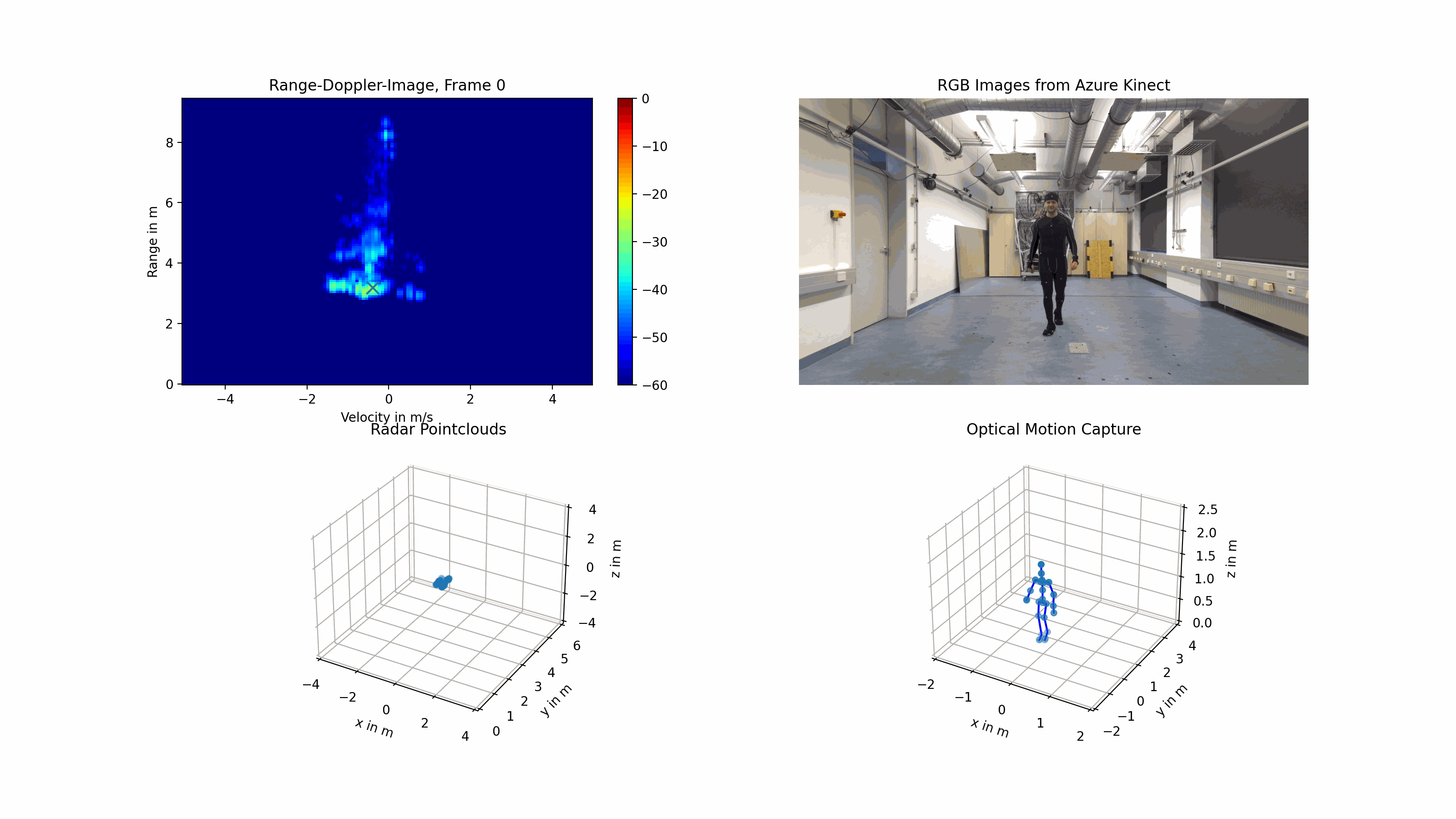MA: Human Pose Estimation Using Radar Raw Data
Task description:
Human pose estimation is a pivotal focus in the field of computer vision research, extensively explored over time. It involves analyzing RGB images captured from one or multiple camera angles to predict the skeletal structure of humans, essentially mapping out the keypoints of the body. Despite the notable achievements of previous RGB-based pose estimation methods, there are still some shortcomings with this technology. Particularly in low-light conditions, RGB images fail to adequately capture a person’s pose. Moreover, relying on vision-based inputs raises concerns regarding personal privacy. Consequently, radar technology is a promising alternative to address these constraints.
A comprehensive study of human activities is conducted at the Institute of Microwaves and Photonics (LHFT) recording synchronized raw radar data, RGB images, and optical motion capture (OMC) data. Recognized as the gold standard for motion recognition, OMC data serves as the ground truth for this investigation This thesis focuses on analyzing human poses using raw radar data by the development of robust machine learning (ML) methodologies to extract keypoints from human poses.
To achieve this goal, a thorough review of the literature is imperative to grasp the state-of-the-art ML techniques tailored for extracting keypoints from raw radar data. Measurements are then conducted to acquire a foundational dataset for ML training. Subsequently, various ML approaches are developed and accurately evaluated. Finally, the accuracy of pose estimation using raw radar data is compared with existing results derived from point clouds, providing valuable insights into the efficacy of this novel approach.

Requirements: Python, Pre-knowledge in radar signal processing
Supervisors: Prof. Dr.-Ing. Martin Vossiek, Lukas Engel, M.Sc.
Date of issue: April 2024
Language: German or English